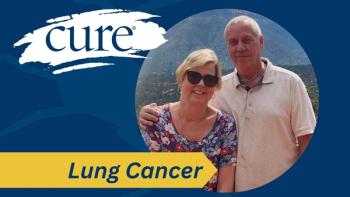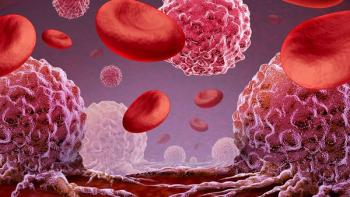Patients with B-cell acute lymphoblastic leukemia (B-ALL) and mantle cell lymphoma (MCL) experienced similar rates of non-relapse mortality and an acceptable safety profile with outpatient administration of lymphodepletion ahead of receiving Tecartus (brexucabtagene autoleucel) when compared with inpatient administration of lymphodepletion and Tecartus, results from a retrospective study presented at the 2024 ASH Annual Meeting have shown.
Findings showed that patients administered lymphodepletion in the outpatient setting (28 patients) — irrespective of the setting for Tecartus infusion — experienced a 60-day non-relapse mortality rate of 3.6% versus 7.1% for those given lymphodepletion and Tecartus in the inpatient setting (28 patients). The six-month progression-free survival (PFS) rate was 83.3% for the outpatient group versus 71.1% for the inpatient group.
Glossary
Lymphodepletion: chemotherapy administered before CAR-T cell therapy.
Non-relapse mortality: death without a recurrence or progression of disease after a stem cell transplant.
Progression-free survival (PFS): the time patients live without their disease spreading or worsening.
ECOG performance status: a system of scoring a patient’s ability to complete daily tasks, with a lower score indicating higher function.
Allogeneic stem cell transplant: the replacement of a patient’s stem cells with cells from a donor.
Autologous stem cell transplant: when a patient receives an infusion of their own healthy stem cells.
Cytokine release syndrome (CRS): a condition sometimes seen after CAR-T cell therapy when there is a large release of cytokines into the blood from immune cells, which may lead to symptoms including nausea, fever, rash, headache, low blood pressure, rapid heartbeat and trouble breathing.
Hypotension: low blood pressure.
Dyspnea: shortness of breath.
Complete response (CR): the disappearance of cancer.
Immune effector cell-associated neurotoxicity syndrome (ICANS): A neurological condition that may occur from CAR-T cell therapy caused by an immune response from the treatment. Symptoms include difficulty concentrating, confusion, headache, mood changes, seizures, muscle weakness/numbness and vision problems.
“[Tecartus] is safe to administer [in the outpatient setting] with similar efficacy and non-relapse mortality,” lead study author Dr. Tamer Othman of City of Hope in Durante, California, and colleagues wrote in a poster presentation of the data. “Future studies with [a] larger sample size and longer follow-up are needed to confirm our findings.”
Investigators conducted a retrospective study of adult patients with B-ALL or MCL treated with Tecartus at City of Hope between Nov. 1, 2020, and March 31, 2024. Patients were divided into two groups. The first group included patients given lymphodepletion in the outpatient setting, irrespective of the setting of Tecartus infusion. The second group featured patients given lymphodepletion in the inpatient setting.
In the overall population (56 patients), 66% had B-ALL, and 34% had MCL. The median age was 55 years, and most patients were male (77%), were Hispanic White (61%), had an ECOG performance status of 0 to 1 (93%), and had higher disease burden (75%). Patients received a median of four prior lines of therapy; 23% of patients underwent a prior allogeneic stem cell transplant and 7.1% received a prior autologous stem cell transplant.
In the outpatient group, 82% of patients received Tecartus in the outpatient setting; all patients in the inpatient group were infused with CAR-T cell therapy in the inpatient setting. Notably, 86% of patients in the outpatient group were admitted to the hospital after starting lymphodepletion in the outpatient setting at a median of eight days after the start of lymphodepletion. Reasons for admission included Tecartus-related toxicities such as fever because of cytokine release syndrome (CRS) (71%), hypotension due to poor oral intake (4.2%) and dyspnea (4.2%). Other reasons for admission included high-burden disease (13%), fever during lymphodepletion due to leukemia (4.2%) and pain control during lymphodepletion (4.2%). The median time hospitalized during the first 100 days from the start of lymphodepletion was 10 days in the outpatient group versus 27 days in the inpatient group.
Additional data showed that patients with B-ALL in the outpatient group (20 patients) achieved a complete response (CR) rate of 90% versus 88% in the inpatient group (17 patients). In patients with MCL, the CR rates were 75% in the outpatient group (eight patients) versus 73% in the inpatient group (11 patients).
Safety data showed that any grade CRS occurred in 86% of patients in the outpatient group versus 82% in the inpatient group. The rates of grade 3 (severe) or higher CRS were 7.1% and 14%, respectively. The respective median durations of CRS were four days and four days. Any-grade immune effector cell-associated neurotoxicity syndrome (ICANS) was reported in 54% of patients in the outpatient group versus 61% in the inpatient group. The respective rates of grade 3 or higher ICANS were 29% and 25%. The median duration of ICANS was four days in the outpatient group versus seven days in the inpatient group. Actemra (tocilizumab) was given for toxicity to 79% of patients in the outpatient group versus 75% of patients in the inpatient group. The median number of Actemra doses was two in both groups.
Steroids were given for toxicity to 79% of patients in the outpatient group versus 71% of patients in the inpatient group; the rates of prophylactic dexamethasone administration were 32% and 25%, respectively. Prophylactic anakinra was given to 29% of patients in the outpatient group versus 7.1% of those in the inpatient group. Treatment anakinra was given to 25% and 18% of patients, respectively.
Reference
“Outpatient administration of brexucabtagene autoleucel (brexu-cel) for acute lymphoblastic leukemia (ALL) and mantle cell lymphoma (MCL) is safe and feasible” by Dr. Tamer Othman et al., Blood.
For more news on cancer updates, research and education, don’t forget to subscribe to CURE®’s newsletters here.






